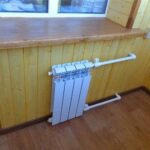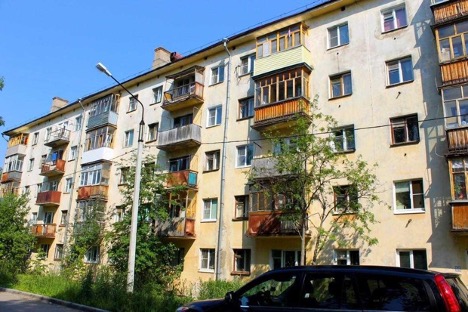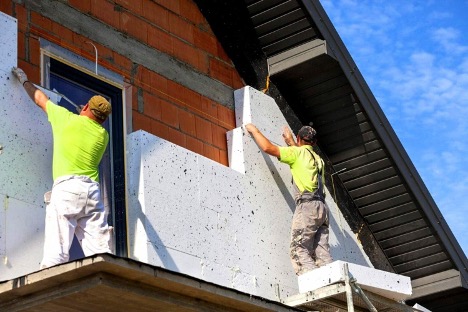Calculation of the length and power of the heating cable for electricity consumption: formula
Heating cable is an effective solution for heating pipes, floors and other surfaces, preventing them from freezing and maintaining a comfortable temperature. Correctly calculating the length of the heating cable and its power is critical to creating an effective and economical heating system. In this article we will look at how to calculate a heating cable for various needs and estimate its electricity consumption.
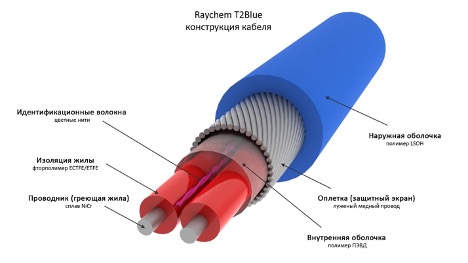
The content of the article
Basics of heating cable calculations
The basis for calculating a heating cable lies in understanding its functional purpose and operating conditions. The heating cable is designed to prevent pipes from freezing, heating floors and other surfaces that require maintaining a certain temperature. An important aspect when choosing is to determine the required cable length and its power, which directly depends on the area of the heated surface, the thermal insulation characteristics of the object and the ambient temperature conditions. The calculation begins with determining the total heat loss of the object and the required power to compensate for these losses.
To calculate the length of the heating cable, it is necessary to take into account the type of cable (self-regulating or resistive), its power per meter and installation method. Self-regulating cables, due to their ability to adapt to temperature changes, provide more efficient and economical use of electricity than resistive cables.Planning the cable route affects the total length required: the closer the cable is laid to itself, the higher the heat transfer and the shorter the length required to heat the same area.
Electricity consumption of a heating cable depends on its power and operating time. Calculation of cable power consumption allows you to determine the energy consumption of the heating system and its operating costs. Self-regulating cables change their output depending on the ambient temperature, making them preferable for use in environments where temperatures vary widely. This is especially true for heating pipes and open surfaces, where it is necessary to maintain a constant temperature while minimizing energy consumption.
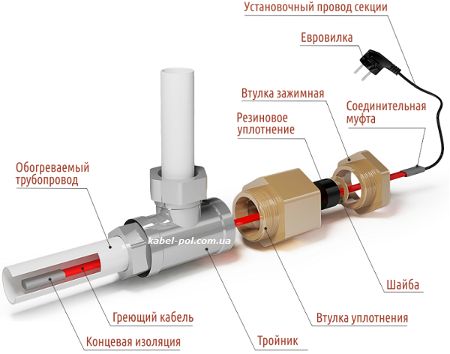
Electricity consumption
Self-regulating heating cable power consumption is determined by its power per meter and the total length of the cable. Self-regulating cables, such as self-regulating floor heating cable and self-regulating underfloor heating, are distinguished by the fact that their wattage adapts to the surrounding temperature, making them more energy efficient than traditional constant wattage cables.
To determine how much a heating cable for pipes or floors consumes, you need to know its power and expected operating time. The power consumption of the heating cable and its efficiency will depend on the type of cable and its operating conditions.
Calculation formula
For detailed calculation of the length and power of the heating cable, as well as its electricity consumption, formulas are used based on the physical principles of heat transfer and electrical characteristics. Let's look at these formulas in more detail, using Latin terms to denote physical quantities.
Calculation of heating cable length:

Calculation of heating cable power:

Electricity consumption:

Calculation example:

These calculations will help you determine how much electricity the heating cable consumes per hour and plan its operation taking into account the need to save energy.
What can lead to errors in calculations?
Errors in calculating the length and power of the heating cable can lead to a number of serious problems in the heating system, affecting both its efficiency and operational safety. Let's consider the main consequences that such errors can lead to:
- Insufficient heating. If the calculated cable length is shorter than required, this may result in insufficient heating of the application. As a result, during cold periods, pipes may freeze and floors may remain cold, which will reduce the comfort of use of the premises and increase the risk of emergency situations associated with the destruction of infrastructure.
- Overheating and risk of fire. On the other hand, excessive cable length with high power, which does not correspond to the actual needs of the heated surface, can lead to overheating. This is not only inefficient in terms of energy consumption, but also dangerous, as it increases the risk of fire and can lead to damage to heated objects or structures.
- Unreasonably high operating costs. Errors in calculations can lead to excess energy consumption, which in turn significantly increases operating costs. This makes the heating system economically ineffective, especially in the face of rising electricity tariffs.
- Reduced system life.Incorrect cable selection and incorrect installation can lead to increased wear and degradation of materials. Self-regulating cables operating under constant overload due to incorrect design may fail faster.
- Legal and insurance problems. In the event of accidents or fires due to incorrect calculation and installation of the heating cable, difficulties may arise in obtaining insurance payments. In addition, the owner of the property may face legal liability for damage caused to third parties.
To avoid the above problems, it is extremely important to carefully approach the process of calculating and selecting a heating cable, taking into account all the necessary parameters and operating conditions. In some cases, it is recommended to contact specialists to carry out professional calculations and installation of the heating system.
Practical recommendations
To ensure efficient and economical use of the heating cable, you should:
- Accurately determine the required cable length based on the area of the heated surface.
- Select a cable with suitable power per meter, taking into account the operating conditions.
- Consider the type of cable (self-regulating or constant power) depending on the requirements for efficiency and energy savings.
- Calculate total energy consumption to plan operating costs.
Correct calculation and selection of a heating cable can not only provide reliable protection against freezing, but also significantly reduce energy costs.

